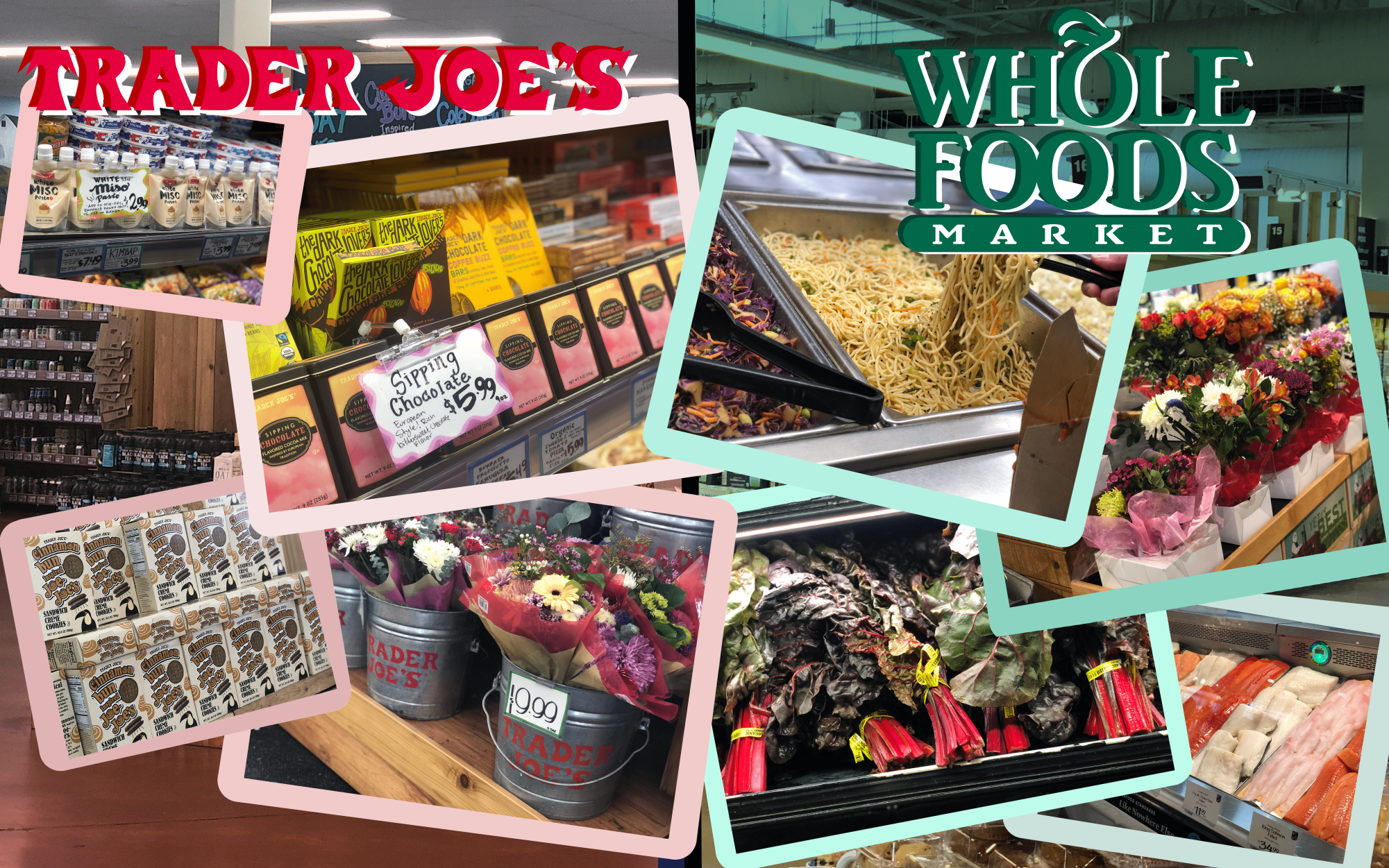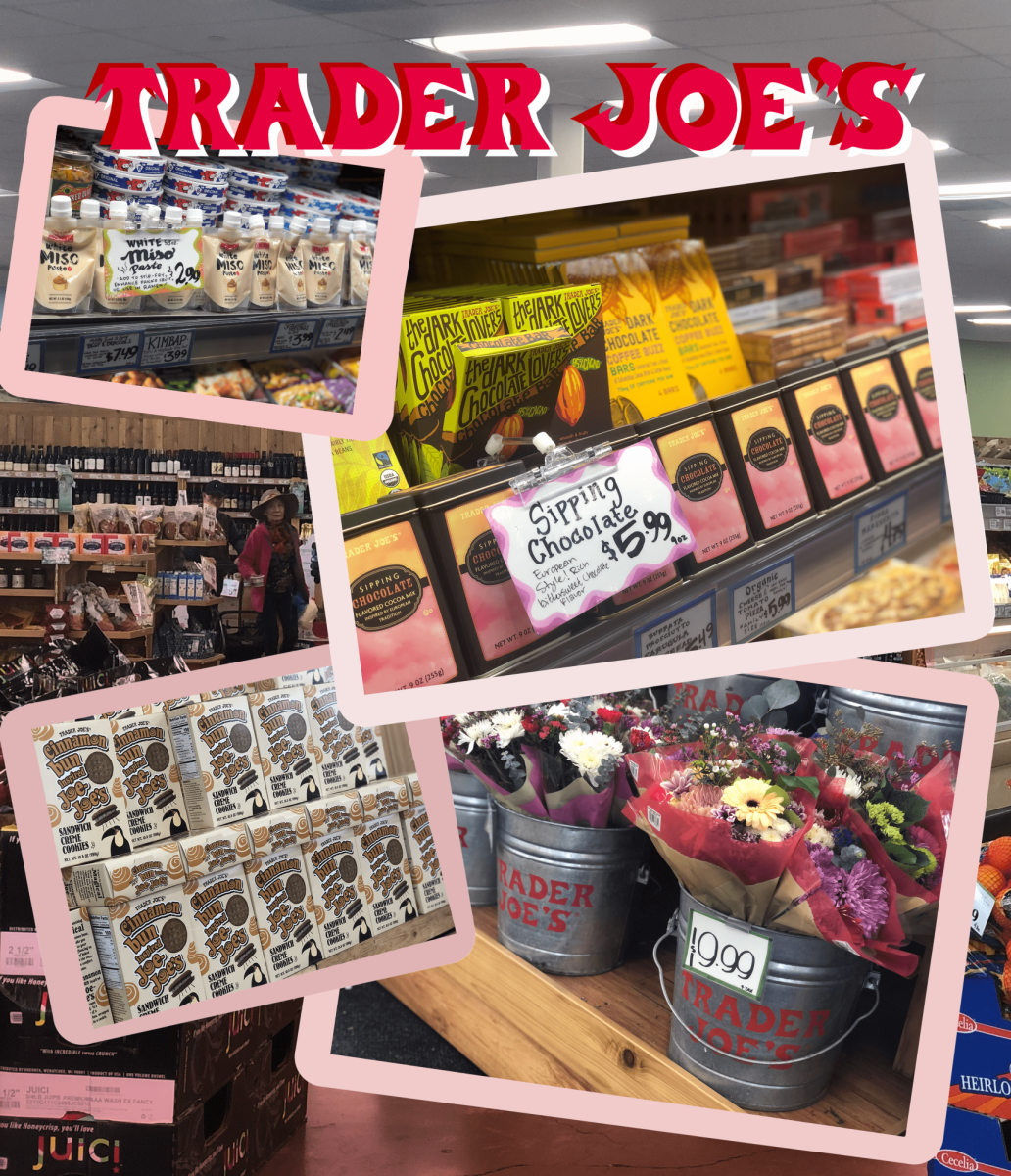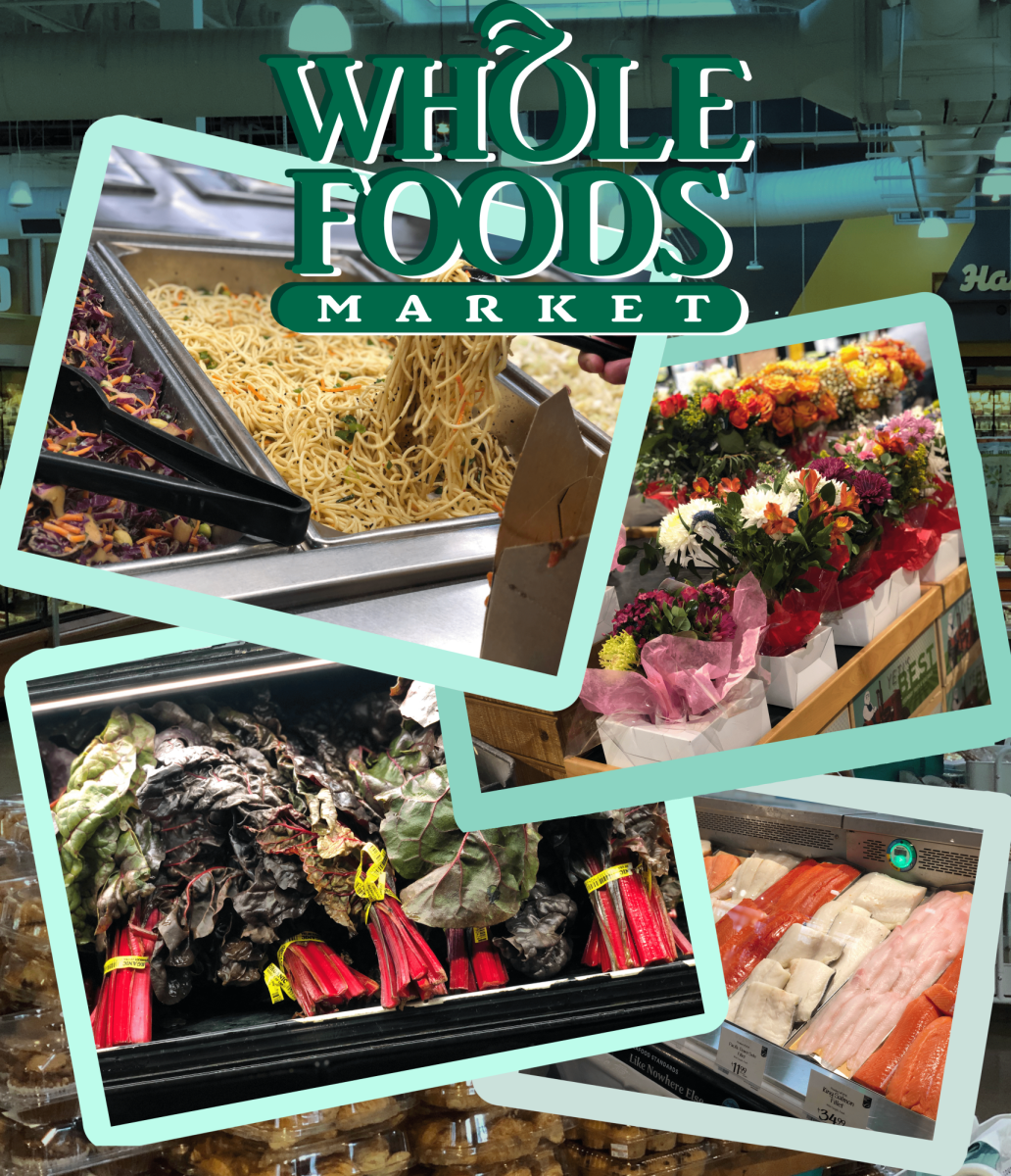Perspectives: Grocery stores

Walking into the typical grocery store, corporate logos plaster automatic doors. Inside, the walls are the traditional grayed pastels. Rows and rows of products line the location. Not only is it boring and plain, but uninviting and artificial. In contrast, Trader Joe’s leans into a small-business feel. They have hand-painted logos and individually written price tags.
Trader Joe’s employees embody an inviting culture; each time I head to the checkout line, the cashier greets me with a smile and asks, “How’s your day going?” or “Did you find everything you needed?” When I was younger, standing in line behind my mom, I always grinned as the cashier handed me and my brother a special Trader Joe’s sticker to wear as our badge of honor on the way home.
Their commitment to their customers also extends towards curating healthy foods. Trader Joe’s ensures that none of their products contain genetically modified organisms or artificial flavoring. More than 20% of their products are organic, while organic products only make up about 6% of total food sales in the United States. A product with the Trader Joe’s branding is immediately recognized as healthy and sustainably produced.
Because Trader Joe’s produces most of its own groceries, they set low and affordable prices for their patrons, letting everyone access high quality food. Competitor Whole Foods often has high prices, especially for organic products. But Trader Joe’s maintains their low pricing while keeping their commitment to healthy and organic foods. In comparison to other grocery stores in the US, Trader Joe’s prices were 19% lower on average.
Furthermore, Trader Joe’s also offers unique food items like Cinnamon Bun Oat Creamer and Sour Cream and Onion Flavored Rings that can be found nowhere else. Even better, they have collections of foods from different cultures like their kimbap, ube spread or Baingan bharta. With these products often placed at the fronts of each row, Trader Joe’s encourages their customers to experience different cuisines, helping to build community.
In addition, they offer a unique selection of seasonal items to get shoppers into the holiday spirit. They sell chips in the shape of ghosts for Halloween and gingerbread ice cream for Christmas. My personal favorite are the hot cocoa bombs with an adorable white chocolate polar bear exterior and delicious marshmallows hidden inside. I love going to Trader Joe’s and wandering the aisles in anticipation of discovering these fun new products.
Trader Joe’s provides the best customer experience by far, from their employees to the constant cycle of new products. They make grocery shopping something to look forward to, which is a unique experience among stores.

Recognizable by its distinctive simple, yet iconic, green-and-white logo, this grocery giant has become synonymous with an elevated shopping experience that goes beyond mere sustenance. In the expansive landscape of grocery shopping, one retailer has consistently set itself apart by embodying a commitment to quality, sustainability and health-conscious living: Whole Foods Market.
Whenever my family and I go to Whole Foods, we always make a stop at the fresh-squeezed orange juice machine. After choosing the size of the drink we want, the self-serve machine cuts, juices and discards the oranges right before our eyes, leaving us with a bottle of juice that cannot be fresher. Only one example of how Whole Foods strives to bring to its consumers the freshest products, the grocery giant endeavors to allow its customers a healthy, robust diet.
With a core value being “to nourish people and the planet,” at the heart of Whole Foods Market’s appeal is its unwavering dedication to provide organic and natural products. In an era fraught with concerns over pesticides and genetically modified organisms, Whole Foods stands as a beacon for those seeking wholesome alternatives. The store curates a selection of fruits, vegetables, meats and packaged goods that adhere to stringent organic standards, allowing consumers to make health-conscious choices.
However, the impact of this commitment extends far beyond individual health. Whole Foods’ steadfast support for organic farming practices contributes to sustainable agriculture, prioritized soil health, biodiversity and reduced environmental impact. With its LEAP program, Whole Foods offers small brands partnerships with an aim to grow emerging producers through mentorship. By encouraging customers to reduce waste and bring their own containers for bulk items such as nuts, grains and other dry goods, Whole Foods stands with the zero-waste movement and aims to minimize the use of single-use packaging. Some stores also offer discounts for customers who bring their own containers as an incentive to have sustainable practices.
After Amazon purchased the Whole Foods company in 2017, the convenience factor of shopping at Whole Foods became undeniable. With Amazon Fresh products, users can order their groceries through the Amazon website and have them delivered straight to their doorsteps, with no shipping fee on orders greater than 50 dollars. Customers no longer need to go in-person into stores to shop for their groceries, proving Whole Foods’ superiority in both produce and availability.
The quality benchmarks set by Whole Foods are particularly evident in Whole Foods’ approach to seafood. The store supports responsible fishing practices, ensuring that its seafood selection aligns with ecological sustainability goals. By prioritizing sustainable sourcing, Whole Foods empowers consumers to make choices that contribute to a healthier planet.
Beyond raw components, Whole Foods also offers an array of prepared foods. The hot food bar, salad bar and ready-to-eat meals maintain the store’s commitment to quality and freshness. The soups always warm my soul, and the packaged lunches are great to grab quickly when I’m on the go.
By integrating quality, sustainability and community engagement, the store’s commitment to organic and natural products, quality standards, culinary excellence and sustainable sourcing sets it apart in the competitive landscape of grocery shopping.




